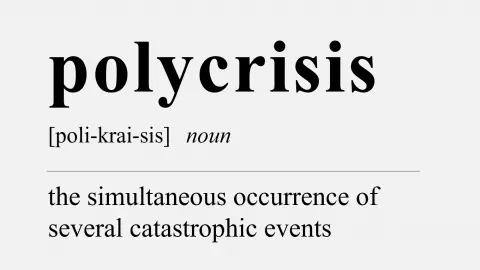The US economy is holding up, despite significant challenges
The US economy continues to perform pretty well with the strength of the jobs market an obvious highlight. However, higher borrowing costs, less credit availability, worries about the debt ceiling and squeezed consumer spending mean risks are skewed to the downside
Higher borrowing costs and reduced credit availability are major issues
The Federal Reserve has raised interest rates by 500bp over the past 15 months in what has been the most rapid and aggressive phase of monetary policy tightening experienced in more than 40 years. At the same time, banking failures are creating significant stresses to the financial system with lending conditions rapidly tightening as well. Historically, the combination of these two events has been toxic for economic activity.
For now, inflation continues to run hot and the jobs market remains strong with unemployment returning to a cycle low of 3.4% in April. Still, the Federal Reserve appears to be of the mindset that monetary policy is now restrictive and given the “long and varied lags” between policy changes and the impact on the economy, it probably makes sense to pause at coming meetings.
We think that we are now at the peak for interest rates and the next move will be for the Fed to cut rates later this year. Business confidence, be it the Conference Board measure of CEO confidence or the NFIB small business optimism index, are at recession levels, which suggests a defensive mindset that implies less investment and hiring is likely over the coming quarters.
The housing market is also under pressure with mortgage applications for home purchases continuing to trend downwards. The combination of higher borrowing costs and reduced credit availability is likely to intensify these trends.
Tighter credit conditions point to a rapid slowdown in lending growth

As credit tightens, unemployment rises
The latest Senior Loan Officer survey from the Fed shows that banks are increasingly nervous about the lending environment. This survey has historically had a strong relationship with many cyclical indicators and currently points to a rapid downturn in commercial bank lending growth over the next 12 months.
This is hugely significant as what turns struggling businesses into failing businesses is when credit availability evaporates. Small and regional banks have been hit by a deposit flight and will likely face greater regulatory oversight in the wake of recent events, both of which will deter lending. Given these banks account for more than 40% of all lending in the US, with a particular focus on small businesses outside of major cities, this is a troubling situation. Large banks are unlikely to be able to fill the gap and the risk is that unemployment climbs, as the chart below implies.
Tighter credit conditions always lead to higher unemployment

The challenges are mounting
An additional threat comes from the commercial real estate sector. Small and regional banks account for 70% of all lending here and with office valuations plunging as refinancing costs soar and occupancy rates continue to languish, there is the very real threat of significant loan losses that will intensify the pressure on the US banking system.
On top of that, we have the US debt ceiling, which we address in greater detail elsewhere in this monthly update. Our key takeaway is that the personalities involved and their entrenched positions mean it is almost impossible to believe that a deal will happen smoothly and quickly. We fear that it will take significant economic and financial market stress to trigger a climbdown from the key players. This could mean a government shutdown and possible default, which would only heighten the likelihood of a recession.
There are also concerns about a potential resumption in Federal student loan repayments from September onwards. This could severely hit the spending power of millions of American households. As such, the challenges are really mounting for the second half of the year.
The Fed looks set to reverse course before year-end
Inflation is sticky, but given the darkening clouds surrounding the US economy and the fact that input costs are moderating, be it import prices, producer prices and even tentative signs of wage growth moderating, we think it will get back to the 2% target by early 2024.
The market is currently pricing the potential for rate cuts as soon as September, but we doubt that the Fed will respond quite as quickly given inflation is still likely to be well above target at that point. Nonetheless, the Fed has a dual mandate of maximising employment as well as achieving 2% inflation over time. Policy optimisation for the Fed’s two targets implies it doesn’t need to see inflation hitting 2% before cutting interest rates, if unemployment is starting to rise and it is confident inflation will continue to slow.
We think the Fed will wait until the fourth quarter before loosening policy, but will end up cutting interest rates more aggressively, at least in the early stages. We forecast 50bp of rate cuts at both the November and December Federal Open Market Committee meetings with the Fed funds rate getting down to 3% by mid-2024.
Download
Download article
12 May 2023
ING Monthly: We’re in a polycrisis – and this is what it means This bundle contains {bundle_entries}{/bundle_entries} articlesThis publication has been prepared by ING solely for information purposes irrespective of a particular user's means, financial situation or investment objectives. The information does not constitute investment recommendation, and nor is it investment, legal or tax advice or an offer or solicitation to purchase or sell any financial instrument. Read more
